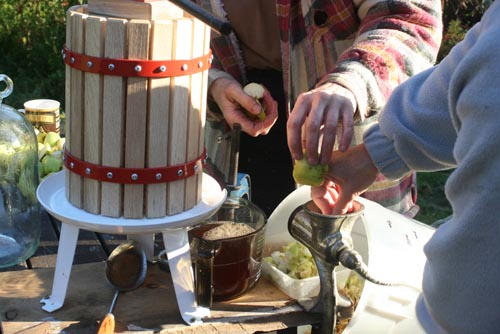Books: The Manual of Plant Grafting By Peter T. Macdonald
ISBN 978-1-60469-463-5 Timber Press, London, Portland.
This is great addition to my library of practical horticultural books – no it is not a coffee table glossy, but 228 pages of really good advice on why, how and when to carry out grafting.
The author, Peter Macdonald, has travelled widely in his research for this book, and brought together 9 chapters covering the history of grafting, the biology of plant union processes, as well the more practical ways of carrying out grafting.
He has been able to cover both old techniques and current thinking and practises, as well as ideas where horticulturalists may go in the future. The photos used throughout are excellent, the diagrams well drawn.
As a producer of fruit trees I find almost every aspect of my operation is covered here, bar a few peculiarities which each propagator has. The relative benefits of different techniques are well recorded so no lack of information here for the aspiring student or amateur.
Of particular relevance to me is the techniques used in fruit production: whip and tongue and chip budding. On page 131 the whip graft is rightly recommended for new grafters, and a good starting point once competence with the knife is achieved. Whilst there is no substitute for seeing the techniques mentioned being carried out, on pages 133 to 136, Peter’s lengthy description, photos and diagrams of the whip and tongue are a great asset. The danger to fingers and hands is obvious in the top drawing on page 135….do get this demonstrated before you try it is my advice!
On Chip Budding, it is stated that the tapes need to be removed in 6 weeks after budding( page 153). In Scotland, I have found that no detriment occurs to the percentage bud-take even if they are left till late winter, and it fits into my work schedule to do this task later in the year.
The Appendix, ( appendices?), pages 179-203 are a very useful resource in a tabular form listing the methods of grafting for over 220 scion / rootstock combinations plus top worked combinations and a list of current fruit tree rootstocks.
The 4 pages of references and 14 pages of index just finish off this book nicely.
The Grafter’s Handbook by RJ Garner has been the trusted grafter’s bible for 50 years, now this is a very well produced and edited additional resource for the keen horticultural students and amateurs of the future wanting to know more of the subject. I thoroughly recommend this book to these students!
Andrew Lear
2015.

